- europages
- >
- COMPANIES - SUPPLIERS - SERVICE PROVIDERS
- >
- engine development
Results for
Engine development - Import export

MICROCONTROL GMBH & CO. KG - SYSTEMHAUS FÜR AUTOMATISIERUNG
Germany
With CANopen, the user organization CAN in Automation (CiA) has created a protocol standard which has widely spread in embedded systems and mechanical engineering. CANopen specifications not only define various services for data exchange, they also specify standardized access to the systems via device profiles and application profiles. Target group CANopen training The target group of the CANopen workshop is development engineers who are looking for detailed knowledge about the communication profile or would like to get an insight in the CANopen / CANopen FD protocol stacks.
Request for a quote
MICROCONTROL GMBH & CO. KG - SYSTEMHAUS FÜR AUTOMATISIERUNG
Germany
CAN (Controller Area Network) is a network concept that has been developed for the automotive industry originally. Today, CAN is especially used in networking industrial control systems, sensors and actuators based on the field bus technology. In our CAN-bus training you will learn about the physical properties of a CAN-bus system as well as protocol structure. The participants will look into the theory of hardware and software design and improve their knowledge in practical units. This CAN-bus training course forms the basis for our advanced-level workshops on CANopen and J1939. Target group CAN-bus training The target group of the CAN-bus workshop is development engineers who are looking for a quick start into the ISO standard 11898-1:2015 (Road vehicles – Controller Area Network). Also, we address decision makers and product managers to enable them to assess the suitability of the CAN-bus standard for their applications.
Request for a quote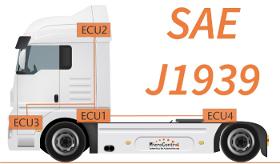
MICROCONTROL GMBH & CO. KG - SYSTEMHAUS FÜR AUTOMATISIERUNG
Germany
The SAE J1939 standard (Serial Control and Communications Heavy Duity Vehicle Network) has originally been designed by SAE International to be used in heavy duty vehicles. In the meantime, the protocol is widely used also in agricultural machinery, rail vehicles and sea vessels and in a wide range of diesel-driven machinery. Target group J1939 training The target group of the J1939 intensive workshop is development engineers who are looking for a quick start into handling the communications profile or would like to get an insight into the J1939 protocol stack. Also, we address decision makers and product managers to enable them to assess the suitability of the J1939 protocol stack for their applications.
Request for a quote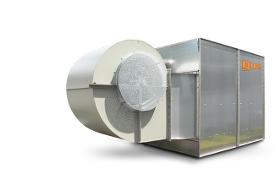
TECHNOTRANS SOLUTIONS GMBH
Germany
Our gwk engineers are passionate about developing technical solutions and this is what we as manufacturers want to prove in the area of cooling towers with our gvk/ghkv series. We see it as our task to understand the entire process of our customers. Therefore we have focused on quality and longevity for the products gvk/ghkv. The cooling towers are part of a central cooling tower system, supplied turn-key and regulated with a freely programmable microprocessor control system or programmable logic control. They are used for dissipation of excess heat from production systems with a higher temperature level and they operate on the principle of evaporation. This is an important consideration for environmentally conscious industries.
Request for a quote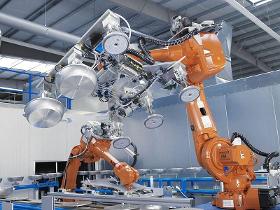
RIPPERT ANLAGENTECHNIK GMBH & CO. KG
Germany
Solutions for the transport and handling of parts. The question of how surface coating plants can be optimally integrated into a production environment arises with ever increasing frequency. Rippert offers its customer an ‘everything from one source solution’ here. The company’s own engineers develop coordinated solutions for the transport and handling of parts together with the customer. Simulation is thereby often the right tool for recognising the full potential of these possibilities. From frying pans to heavy workpieces from the wind power sector, Rippert has already ‘taken it all in hand’. We work on concepts in which industrial robots substitute or supplement the classic conveying equipment in coating plants. For handling tasks we often see the necessity for systems that work adaptively; this means that, for example, image processing systems must recognise the accurate position of parts in two and even three-dimensions so that a robot can pick up inaccurately positioned parts.
Request for a quote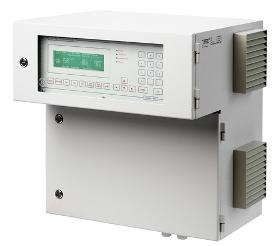
SK-ELEKTRONIK GMBH
Germany
General Application The Thermo-FID is applied in a variety of applications for all kind of industries, environmental protection and as well for research and development. The implementations reach from a LEL-control, over emission and immission control to analytical exhaust control for the chemical industry and in the field of engine-development. Furthermore there is process optimisation and the FID is also used in the field of analytical control of TLV- and TRC- values. Technical Design The electronic system of the FID allows several extra functions. The integrated CPU allows a menu-driven handling as well as a full automatic self-control and failure analysis of the system. On the alphanumeric display are shown several operation and service instructions in clear text which give an easy maintenance process. The process-controlled and dynamic amplifier analysis always within the optimum range. The amplified signals are digitised directly at the detector and get transmitted as...

SK-ELEKTRONIK GMBH
Germany
General Application The Thermo-FID is applied in a variety of applications for all kind of industries, environmental protection and as well for research and development. The implementations reach from an LEL-control, over emission and immission control to analytical exhaust control for the chemical industry and in the field of engine-development. Furthermore there is process optimisation and the FID is also used in the field of analytical control of TLV- and TRC- values. Technical Design The electronic system of the FID allows several extra functions. The integrated CPU allows a menu-driven handling as well as a full automatic self-control and failure analysis of the system. On the alphanumeric display are shown several operation and service instructions in clear text which give an easy maintenance process. The process-controlled and dynamic amplifier analysis always within the optimum range. The amplified signals are digitised directly at the detector and get transmitted as...

SK-ELEKTRONIK GMBH
Germany
General Application The Thermo-FID is applied in a variety of applications for all kind of industries, environmental protection and as well for research and development. The implementations reach from an LEL-control, over emission and immission control to analytical exhaust control for the chemical industry and in the field of engine-development. Furthermore there is process optimisation and the FID is also used in the field of analytical control of TLV- and TRC-values. Technical Design The electronic system of the FID allows several extra functions. The integrated CPU allows a menu-driven handling as well as a full automatic self-control and failure analysis of the system. On the alphanumeric display are shown several operation and service instructions in clear text which give an easy maintenance process. The process-controlled and dynamic amplifier analysis always within the optimum range. The amplified signals are digitised directly at the detector and get transmitted as...

SK-ELEKTRONIK GMBH
Germany
General Application The Thermo-FID is applied in a variety of applications for all kind of industries, environmental protection and as well for research and development. The implementations reach from a LEL-control, over emission and immission control to analytical exhaust control for the chemical industry and in the field of engine-development. Furthermore there is process optimisation and the FID is also used in the field of analytical control of TLV- and TRC- values. Technical Design The electronic system of the FID allows several extra functions. The integrated CPU allows a menu-driven handling as well as a full automatic self-control and failure analysis of the system. On the alphanumeric display are shown several operation and service instructions in clear text which give an easy maintenance process. The process-controlled and dynamic amplifier analysis always within the optimum range. The amplified signals are digitised directly at the detector and get transmitted as...
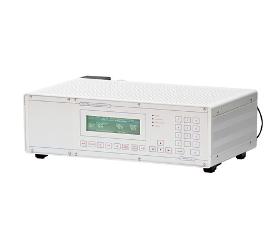
SK-ELEKTRONIK GMBH
Germany
General Application The Thermo-FID is applied in a variety of applications for all kind of industries, environmental protection and as well for research and development. The implementations reach from an LEL-control, over emission and immission control to analytical exhaust control for the chemical industry and in the field of engine-development. Furthermore there is process optimisation and the FID is also used in the field of analytical control of TLV- and TRC-values. Technical Design The electronic system of the FID allows several extra functions. The integrated CPU allows a menu-driven handling as well as a full automatic self-control and failure analysis of the system. On the alphanumeric display are shown several operation and service instructions in clear text which give an easy maintenance process. The process-controlled and dynamic amplifier analysis always within the optimum range. The amplified signals are digitised directly at the detector and get transmitted as...

SK-ELEKTRONIK GMBH
Germany
General Application The Thermo-FID is applied in a variety of applications for all kind of industries, environmental protection and as well for research and development. The implementations reach from an LEL-control, over emission and immission control to analytical exhaust control for the chemical industry and in the field of engine-development. Furthermore there is process optimisation and the FID is also used in the field of analytical control of TLV- and TRC-values. Technical Design The electronic system of the FID allows several extra functions. The integrated CPU allows a menu-driven handling as well as a full automatic self-control and failure analysis of the system. On the alphanumeric display are shown several operation and service instructions in clear text which give an easy maintenance process. The process-controlled and dynamic amplifier analysis always within the optimum range. The amplified signals are digitised directly at the detector and get transmitted as...
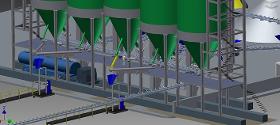
HAVER NIAGARA GMBH
Germany
The quality of a raw material in a natural deposit is uniform only in the ideal cases. Very often the quality of the raw material in the natural deposit and its extraction process varies. This has ramifications on subsequent mining processes. In addition to the changes in particle size and the properties of the stone material, the type and amount of the unwanted material especially can have a considerable negative impact on the result of the washing process. A material that is not sufficiently cleaned can lead to technical problems in subsequent downstream processes, which can lead to a product that requires further processing or one that can be marketed only at a lower price. Despite all the obstacles in creating a uniform, profitable and saleable product, we offer our customers an expert process analysis along with functional models. After completing such an analysis we have the opportunity to develop a process engineering solution for optimising the plant. Another area is...
Request for a quote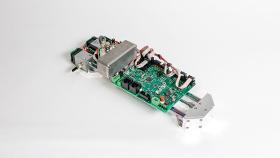
WI.TEC -SENSORIK GMBH
Germany
The ULTRA.sens® is the world’s first OEM gas measurement module based on miniaturized UV LEDs. The stability and lifetime of these UV-LEDs enables high-precision gas analyses down to the ppb range. By using two UV-LEDs 2 gases can be detected simultaneously. With this approach, 2 measuring ranges from ppm to Vol.-% can also be realized. In the spectral range from 200 nm to 500 nm, nitrogen oxides (NO+NO2), aromatic hydrocarbons, hydrogen sulphide, ozone, sulphur dioxide and chlorine can be reliably detected with this novel sensor platform. Applications Environmental and Process Measurement Technology (CEM) Engine development TOC analyzers Elemental analysis Industrial gas analysis Natural gas/biogas analysis Process measurement technology Biogas research
Request for a quote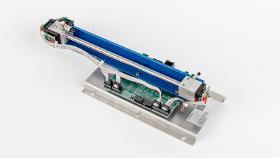
WI.TEC -SENSORIK GMBH
Germany
The ULTRA.sens® is the world’s first OEM gas measurement module based on miniaturized UV LEDs. The stability and lifetime of these UV-LEDs enables high-precision gas analyses down to the ppb range. By using two UV-LEDs 2 gases can be detected simultaneously. With this approach, 2 measuring ranges from ppm to Vol.-% can also be realized. In the spectral range from 200 nm to 500 nm, nitrogen oxides (NO+NO2), aromatic hydrocarbons, hydrogen sulphide, ozone, sulphur dioxide and chlorine can be reliably detected with this novel sensor platform. Applications Environmental and Process Measurement Technology (CEM) Engine development TOC analyzers Elemental analysis Industrial gas analysis Natural gas/biogas analysis Process measurement technology Biogas research
Request for a quote
WI.TEC -SENSORIK GMBH
Germany
The ULTRA.sens® is the world’s first OEM gas measurement module based on miniaturized UV LEDs. The stability and lifetime of these UV-LEDs enables high-precision gas analyses down to the ppb range. By using two UV-LEDs 2 gases can be detected simultaneously. With this approach, 2 measuring ranges from ppm to Vol.-% can also be realized. In the spectral range from 200 nm to 500 nm, nitrogen oxides (NO+NO2), aromatic hydrocarbons, hydrogen sulphide, ozone, sulphur dioxide and chlorine can be reliably detected with this novel sensor platform. Applications Environmental and Process Measurement Technology (CEM) Engine development TOC analyzers Elemental analysis Industrial gas analysis Natural gas/biogas analysis Process measurement technology Biogas research
Request for a quote
WI.TEC -SENSORIK GMBH
Germany
The ULTRA.sens® is the world’s first OEM gas measurement module based on miniaturized UV LEDs. The stability and lifetime of these UV-LEDs enables high-precision gas analyses down to the ppb range. By using two UV-LEDs 2 gases can be detected simultaneously. With this approach, 2 measuring ranges from ppm to Vol.-% can also be realized. In the spectral range from 200 nm to 500 nm, nitrogen oxides (NO+NO2), aromatic hydrocarbons, hydrogen sulphide, ozone, sulphur dioxide and chlorine can be reliably detected with this novel sensor platform. Applications Environmental and Process Measurement Technology (CEM) Engine development TOC analyzers Elemental analysis Industrial gas analysis Natural gas/biogas analysis Process measurement technology Biogas research
Request for a quote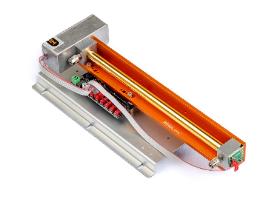
WI.TEC -SENSORIK GMBH
Germany
The INFRA.sens® was specially developed for high-quality NDIR gas analysis. In the design phase, special emphasis was placed on high stability and a low detection limit. With the use of high-performance light emitting diodes (IR-LED) and thermal micro radiators, which were adapted to the needs of gas measurement technology, these goals were achieved in full. In the spectral range from 2 μm to 12 μm, carbon dioxide, carbon monoxide, hydrocarbons and nitrous oxide can be reliably detected up to the ppm range with this new sensor platform. Applications Environmental and Process Measurement Technology (CEM) Engine development TOC analyzers Elemental analysis Industrial gas analysis Natural gas/biogas analysis Process measurement technology Biogas research
Request for a quoteDo you sell or make similar products?
Sign up to europages and have your products listed
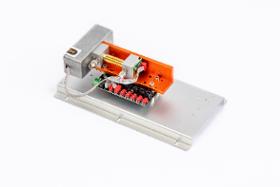
WI.TEC -SENSORIK GMBH
Germany
The INFRA.sens® was specially developed for high-quality NDIR gas analysis. In the design phase, special emphasis was placed on high stability and a low detection limit. With the use of high-performance light emitting diodes (IR-LED) and thermal micro radiators, which were adapted to the needs of gas measurement technology, these goals were achieved in full. In the spectral range from 2 μm to 12 μm, carbon dioxide, carbon monoxide, hydrocarbons and nitrous oxide can be reliably detected up to the ppm range with this new sensor platform. Applications Environmental and Process Measurement Technology (CEM) Engine development TOC analyzers Elemental analysis Industrial gas analysis Natural gas/biogas analysis Process measurement technology Biogas research
Request for a quote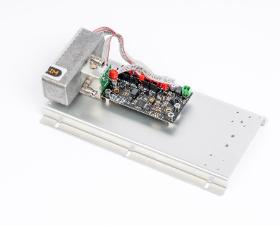
WI.TEC -SENSORIK GMBH
Germany
The INFRA.sens® was specially developed for high-quality NDIR gas analysis. In the design phase, special emphasis was placed on high stability and a low detection limit. With the use of high-performance light emitting diodes (IR-LED) and thermal micro radiators, which were adapted to the needs of gas measurement technology, these goals were achieved in full. In the spectral range from 2 μm to 12 μm, carbon dioxide, carbon monoxide, hydrocarbons and nitrous oxide can be reliably detected up to the ppm range with this new sensor platform. Applications Environmental and Process Measurement Technology (CEM) Engine development TOC analyzers Elemental analysis Industrial gas analysis Natural gas/biogas analysis Process measurement technology Biogas research
Request for a quoteResults for
Engine development - Import exportNumber of results
20 ProductsCompany type